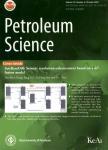Numerical simulation of an acoustic field generated by a phased arc array in a fluid-filled cased borehole
Numerical simulation of an acoustic field generated by a phased arc array in a fluid-filled cased borehole作者机构:State Key Laboratory of Petroleum Resources and Prospecting China University of Petroleum Key Laboratory of Earth Prospecting and Information Technology China University of Petroleum China National Oil & Gas Exploration & Development Company
出 版 物:《Petroleum Science》 (石油科学(英文版))
年 卷 期:2014年第11卷第3期
页 面:385-390页
核心收录:
学科分类:0820[工学-石油与天然气工程] 08[工学] 082002[工学-油气田开发工程]
基 金:supported by the National Natural ScienceFoundation of China (Grant Nos. 11204380, 11374371, 11134011 and 61102102) National Science and Technology Major Project (Grant No. 2011ZX05020-009) PetroChina Innovation Foundation (2013D-5006-0304)
主 题:Phased arc array azimuthal angle first-arrival amplitude acoustic field cased borehole
摘 要:Transducers that are widely applied in cement bond evaluation tools, such as cement bond logs and variable density logs, cannot radiate acoustic energy directionally because of the characteristics of monopole sources. A phased arc array transmitter, which is a novel transducer that differs from monopole and dipole transducers, is presented in this study. To simulate the acoustic field generated by a phased arc array in a fluid-filled cased borehole with different channelings, a 3D finite-difference time-domain method is adopted. The acoustic field generated by a traditional monopole source is also simulated and compared with the field generated by the phased arc array transmitter. Numerical simulation results show that the phased arc array radiates energy directionally in a narrow angular range in the borehole, thereby compressing the acoustic energy into a narrow range in the casing pipe, the cement, and the formation. We present the analyses of first-arrival waveforms and the amplitudes of casing waves at different azimuthal angles for the two different sources. The results indicate that employing a directional source facilitates azimuthal identification and analysis of possible channeling behind the casing pipe.



